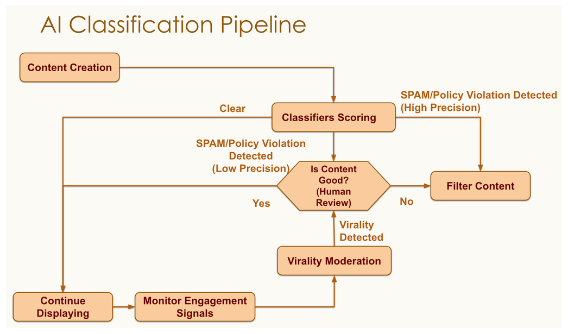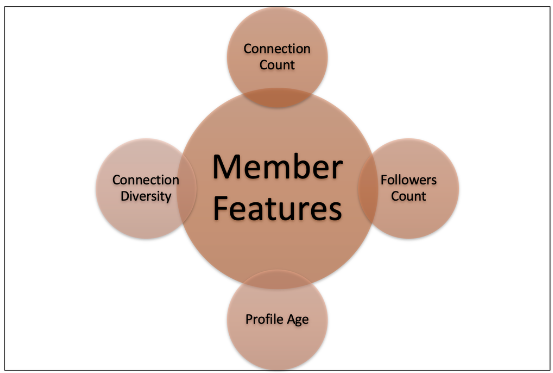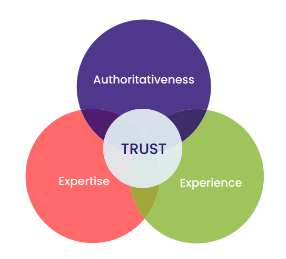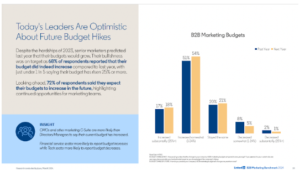B2B marketers recognize that the audience on LinkedIn is immensely valuable: more than 1 billion professionals scrolling their feeds with a career-focused mindset. It’s a fantastic platform for B2B marketing activities and the numbers bear that out.
But marketers also recognize that gaining reach on LinkedIn – especially organic reach – can be extremely challenging for brands. If you’ve put substantial effort into creating content for the platform only to watch it fall flat with minimal reach and engagement, you’re not alone.
The algorithm used by LinkedIn to determine which content shows up on whose feeds is, in many ways, a mystery. But there are plenty of publicly available details and insights to help you shape your content strategy – including recent revelations from LinkedIn itself.
Understanding the LinkedIn algorithm and how it works
LinkedIn uses a complex algorithm to curate and display content to users based on a multitude of factors. Because the ultimate goal is encouraging users to engage, spend time on the platform and return regularly, LinkedIn is highly motivated to ensure members are consistently finding content that is relevant, interesting and valuable to them personally.
This is a good guiding light for your LinkedIn content strategy. In order to better ensure your audience (and by extension, the LinkedIn algorithm) sees your content as relevant, interesting and valuable, there are some proven best practices to follow.
Keys to gaining reach on LinkedIn as a brand
Based on studies, documentation and first-party updates, here are six key approaches and adjustments to help your content gain traction with the LinkedIn algorithm.
Don’t make “virality” a goal on LinkedIn
It’s easy to see the appeal for brands in having a post or piece of content go viral on social media. In reality, the business impact of all this explosive yet ephemeral reach tends to be iffy. And on LinkedIn, aiming for virality can actually be counterproductive.
“LinkedIn is a bit of a different beast in the social network universe,” according to Hootsuite, “because the LinkedIn algorithm is specifically designed to prevent content from going viral.”
That’s not to say a resonant post cannot drive substantial reach and engagement in a short period, but LinkedIn is very sensitive to viral spam and has significant measures in place to detect and even predict it.

(Source)
One of the simplest signals used by LinkedIn to verify authentic and meaningful content is the characteristics of members who engage with it. Evaluating users based on network and activity features, the system seeks to learn: Are these real people genuinely engaging with this content?
With that in mind, it’s great to encourage your employees to interact with brand content shared on LinkedIn (just not the same few employees every time), and to create things that compel engagement from those in your target audience.

(Source)
Avoid using outbound links when possible
I mentioned earlier that a primary objective of LinkedIn’s algorithm is keeping users on the platform. This is, of course, at odds with outbound links that take those users off the site. It’s a pesky reality for marketers who would love to direct that traffic to their website or landing pages.
Posts on LinkedIn with outbound links can still get reach, but it will put you at a disadvantage. A study by Hootsuite found that, on average, posts without links got 6x more reach than posts with links. The linkless posts also received far more reactions and comments despite being shared less frequently.
Consider reserving most of your content with off-site CTAs for paid campaigns, where you can buy clicks and dependably drive traffic. For organic content, consider other valuable actions you can elicit rather than navigating off LinkedIn, such as following your brand’s LinkedIn Page or contributing to the conversation.
Prioritize specialized knowledge and insights
A key facet of LinkedIn’s latest major algorithm update, which took place in June 2023, is the increased prioritization of genuine knowledge and expertise. “The platform is looking to highlight more knowledge and advice experts share,” reports Buffer. “For users, the algorithm determines what expertise is relevant by identifying a user’s interests based on their profile info and activity.”
This is a favorable development for B2B brands, which tend to offer focused specialization within a specific category. If you’re creating content that connects with a target audience of buyers and decision-makers, it’s more likely to surface on the feeds of others with similar professional attributes.
Elevate your employees and executives
The second major component of LinkedIn’s June 2023 algorithm update was an emphasis on increasing content reach to existing connections and followers. This development underscores the value of employee advocacy and executive thought leadership, helping your brand get in front of the networks your team has built throughout their careers.
The downside is that this change might make it even harder for brand content to reach unfamiliar audiences. To counteract this, work to grow your brand’s organic following and build awareness with paid brand campaigns.
Incorporate multimedia
This one is straightforward and nothing new, but content on LinkedIn will generally be better poised to succeed when it features eye-catching creative. Use vivid imagery, compelling video (with captions!) and varied content formats.
According to LinkedIn, posts with images average twice the comments of those that don’t, while using video drives a 5x increase in engagement.
Use influencer marketing on LinkedIn
Deploying an influencer marketing strategy on LinkedIn helps your brand align with much of what the platform’s algorithm is prioritizing today: expert knowledge, authentic networks, and relatable content.
TopRank Marketing CEO Donna Robinson wrote for the LinkedIn Collective about why the LinkedIn platform – with its emphasis on content, conversations and connections – is an ideal channel for B2B influencer marketing, and shared tips for doing it well based on our research for the B2B Influencer Marketing Report.
Stay human and helpful to navigate change
The evolution of LinkedIn’s algorithm is not fundamentally different from the evolution of Google’s search algorithm. Both are intent on prioritizing content that is relevant, high-quality, and shaped by human creativity and expertise. This holds the key to breaking through with your marketing as AI further saturates the content landscape and audiences increasingly demand substance.
At TopRank Marketing, we’ve helped countless clients overcome the challenges of social media marketing. LinkedIn content and strategy creation is just one element of our social media marketing services to explore!
The post How Should LinkedIn Algorithm Changes Affect Your Strategy? appeared first on B2B Marketing Blog – TopRank®.
Source: feedburner.com




